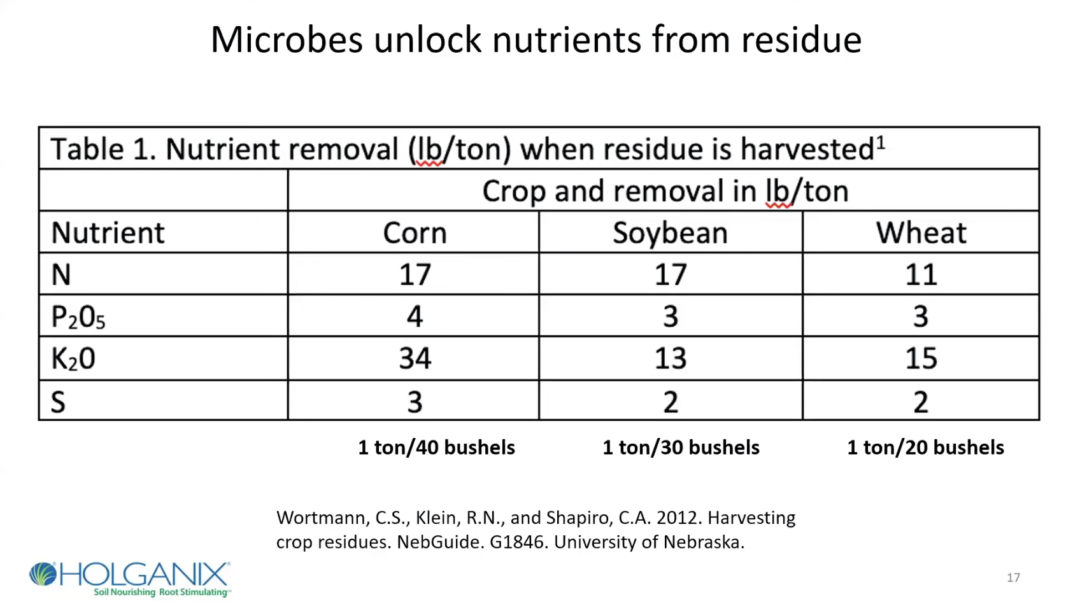Crops rely on microbes for the nutrients that the plants need to grow.
“Microbes mine the soil. Plants farm the microbes,” says Dave Stark, Holganix president of agriculture. “When we don’t have a biologically active soil and we put fertilizer on the ground, the plant takes some of it up and the rest sits there or gets lost. In a biologically active soil, most of the nitrogen (N) need for the crop goes through a microbe first.”

During a webinar about the role of microbes in soil health, Stark identified 5 categories of microorganisms, how abundant they are in a gram of soil and their biomass in pounds per acre in the top 6 inches of soil.

“Look at the range,” Stark Says. “It can be a couple tons of bacteria and actinomycetes in good soil, and almost 7 tons of fungi — or only 9 pounds.”
Stark says microbes in the soil are always changing for reasons including freezing, flooding, tillage practices, overuse of fertilizer and use of fungicides. Each can cause an imbalance of microbes and an overall lower microbial population.
“The microbes you want in the soil need oxygen,” Stark says. “After 48 hours under water or in waterlogged soil, the oxygen is depleted.”
When it comes to buying a biological product to apply to your soil, the types of microbes in it matter.
“If you want a product that is going to bring life back to your soil, you need all of them,” Stark says.
He says to look for a product with living microbes, such as an aerobically produced compost tea, with biological diversity. A powder or a liquid in a tightly sealed jug kept at room temperature can’t have living biology because there’s no oxygen, Stark says.
A biologically active soil helps to break down residue on no-till fields, which unlocks nutrients for crops. Every 40 bushels of corn produces about 1 ton of residue, 30 bushels of soybeans equates to 1 ton of residue, and 20 bushels of wheat produces 1 ton of residue. This chart shows the nutrient values of residue.
“That’s a lot of nutrients you’ve already paid for sitting on top of the ground,” Stark says. “Not one atom ever becomes available unless a microbe breaks it down into a basic chemical form that the plant can take up. We need microbes to do this.”
To learn more about the rhizophagy cycle, how microbes can reduce compaction and insect damage, and more, watch Stark’s full presentation below.
Related Content
Your Soil Health Journey Starts with Microbes [Webinar]
Choose the Right Microbes for Efficient Residue Breakdown
Digging into Crop Residue Breakdown: The Role of Soil Microbes [Webinar]








